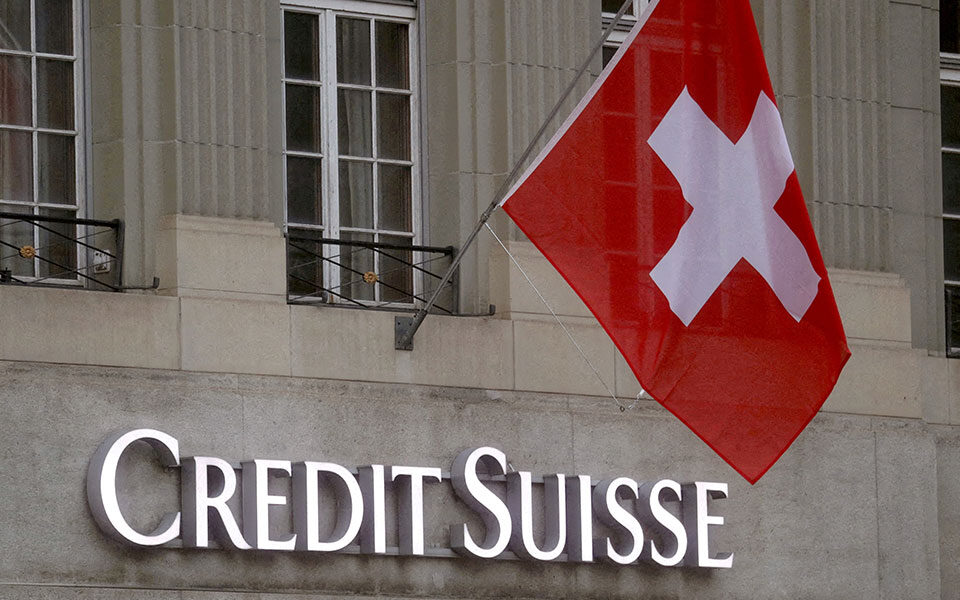
Painful risk management in banks describe in “K” five international economists making the first report on the financial episodes that took place in the shadow of high interest rates.
Its compulsory acquisition Credit Suisse from UBS V Switzerlandagainst the backdrop of statements in the United States about the protection of depositors of the Silicon Valley bank, calmed the markets, sowing fears of a new version of the global financial crisis.
But this is costly for taxpayers and stressful for banks, which will have to continue to finance the economy in a difficult environment.
The central authorities continue to tighten monetary policy, despite the resistance of high prices. As a side effect, rising interest rates increase the profitability of financial institutions. However, this reduces the value of the bonds they already hold. That is why all the attention, after recent events, is emphasized on the structure of bank balance sheets.
All attention, after recent events, is emphatically directed to the structure of bank balance sheets.
Thus, cross-border debt creates conditions for possible credit containment, which in this case could slow down growth.
In the US, the Biden administration’s decision to exceed the maximum deposit guarantee limit now sets a precedent, debunking some of the criticism it has leveled at the Trump administration for easing financial regulations.
In Europe, there was again a need to unify their banking systems. Robust, well-capitalized banking systems in the Eurozone and the UK are depicted with international house measurements that do not support falling equities and worsening spreads due to the “characteristics” of crises in the SVB. and Credit Suisse.
Greek banks appear protected, able to absorb any new risks of international origin. They have elevated deposits and single-digit NPL rates in their quiver.
Step back in the battle for prudential oversight
Jean Tyrol, President of the Toulouse School of Economics, Nobel Laureate in Economics 2014
History repeats itself. By guaranteeing all deposits above the maximum insured amount (US$250,000) at two bankrupt banks, Silicon Valley Bank and Signature Bank, the US government has just destroyed the international prudential rules it helped create. The two organizations have a lot in common: collusion with the outgoing Republican administration, very few insured deposits (97% uninsured deposits for SVB!), “SME” depositors (Silicon Valley start-ups, law and accounting firms, real estate developers in New York). ), and a real solvency problem after significant losses.
Large savers (who, unsurprisingly, are a significant part of the financing of the banking system) and the banks that welcome them are accustomed to having both the whole pie and the full dog. The US decision calls into question a decade-long effort by regulators to hold the financial system accountable and prevent bank risk subsidies for citizens. As in the case of previous decisions to exempt SVB from the liquidity requirement set by the Basel regulators and allow inappropriate accounting tricks in the use of liquidity.
The community should not pay for those who seek to get rich by speculating on macroeconomic risks. Today, there is a lot of uncertainty about interest rates, the rise of which reduces the value of bonds held by financial institutions. These institutions are either protected from interest rate risk (by other institutions or the government) or they have enough capital to withstand a nasty surprise. Otherwise, the state is in captivity. He cannot raise interest rates (for example, to fight inflation) without undermining part of the financial system. Plus, numbers are power. Just like an airport cannot expand if a lot of residents settle next to it. Thus, there is a “collective moral hazard” where many banks become vulnerable in this way, collectively protecting themselves from rising interest rates. Anxiety, brought back into vogue by banking oversight.
• Jean Tyrol’s position is the same for the Daily and the French edition of Challenges.
Changing the US Deposit Guarantee Model
Nicolas Veron, Brueghel co-founder and senior fellow at the Peterson Institute for International Economics.
Although it is difficult to predict with certainty, at the moment there does not appear to be any risk of another international banking crisis. The Swiss episode effectively ended with the takeover of Credit Suisse by UBS despite objections to some terms of the deal – the market will take them over and it doesn’t look like we’ll have a takeover. The investor reaction may have been more defensive due to the events leading up to it in the US, but apart from that, the Credit Suisse problem would have manifested even without the Silicon Valley bank episode. There is no other connection between the two cases. Interestingly, the US is now moving from a limited deposit guarantee to an unlimited one, a structural change that brings the US closer to the European model as we saw it take shape during the 2008 financial crisis, with the exception of Cyprus (i.e., “cutting off” deposits) . As far as central banks are concerned, the ECB wisely sticks to its interest rate policy until proven otherwise. However, higher interest rates have implications for banks, but they also contribute to their profitability. Of course, this always depends on the balance sheet structure because there are often short-term transition issues, as we saw with Silicon Valley Bank.

The Greek banking system is in a good position
Andrea Costanzo, DBRS Morningstar Vice President for Global Financial Institutions
Both the failure of Silicon Valley Bank and Signature Bank, and the Credit Suisse turmoil that eventually led to the UBS takeover, were largely idiosyncratic, exacerbated in the second year by the continued boom in interest. rates and current volatility in financial markets.
We believe that European banks are generally well positioned in terms of risk, liquidity and capitalisation. EU banks they tend to have less exposure to fixed income securities and more stable retail deposits. In addition, they are subject to a regulatory framework that provides for stricter interest rate and liquidity management policies, even for smaller banks. However, we understand that a loss of investor confidence and a liquidity crunch can happen very quickly. In addition, changes in interest rates, combined with high volatility, can create problems for banks. Therefore, we closely monitor the funding and liquidity of banks, as well as their exposure to fixed income securities.
Given the volatility caused by events in the US and Switzerland, the pace of rate hikes by central banks may slow down in the future. We appreciate the timely intervention of the US and Swiss central banks to provide liquidity and support the financial system to avoid significant contagion elsewhere.
As for Greek banks, we have seen them report improved levels of net profitability in 2022 after years of restructuring and challenges such as COVID-19. This is mainly due to positive earnings performance across the board, cost control despite inflationary pressures, and cleaner balance sheets. Faster repricing of loans than deposits helped boost net interest income YtD. However, any further benefits will be limited by higher funding costs. Continued risk mitigation, coupled with limited new NPL formation and robust new loan origination, helped improve asset quality performance in 2022. A plentiful, growing and largely detailed deposit base provides Greek banks with a fairly stable, albeit moderately diversified, funding mix. Liquidity was good at the end of 2022 and capitalization improved after the earlier exposure to risk reduction. The capital buffers are sufficient to cover unrealized losses on fixed income securities at average amortized cost if they are realized due to any funding and liquidity problems following the recent events in the US and Switzerland.

No banking crisis expected
Cole Schmidt, CEO of Smeed Capital Management
Finding a bank stability buyer was the right decision for the Swiss government in the case of Credit Suisse, which will bring in far more tax revenue over time than it loses in the short term from UBS support. This deal closes the capital of an organization that has been mismanaged for the past 15 years and provides more assets to a much more capable team and structure like UBS. There is no banking crisis on the horizon as the banks are well capitalized. Europe, however, needs more banking integration with features such as deposit insurance across the European Union. The largest and most profitable banks have a natural reserve in case something goes wrong. They solve problems with profit, not government bailouts or bailouts. It is low profitability that puts the EU countries at greater risk.
Possible slowdown with fewer bank loans
Sven Jari Sten, Goldman Sachs Chief Economist for Europe
The eurozone banking systems, like the British one, continue to look strong on key indicators, despite the fall in banking shares and the widening of spreads. In terms of macroeconomic transmission indicators, we are seeing a moderate deterioration.
Thus, the slowdown in economic activity is likely to be driven by tighter bank lending, which is already tightening in response to higher policy rates. However, it is difficult to accurately predict the response of bank lending to stress.
Source: Kathimerini
Lori Barajas is an accomplished journalist, known for her insightful and thought-provoking writing on economy. She currently works as a writer at 247 news reel. With a passion for understanding the economy, Lori’s writing delves deep into the financial issues that matter most, providing readers with a unique perspective on current events.